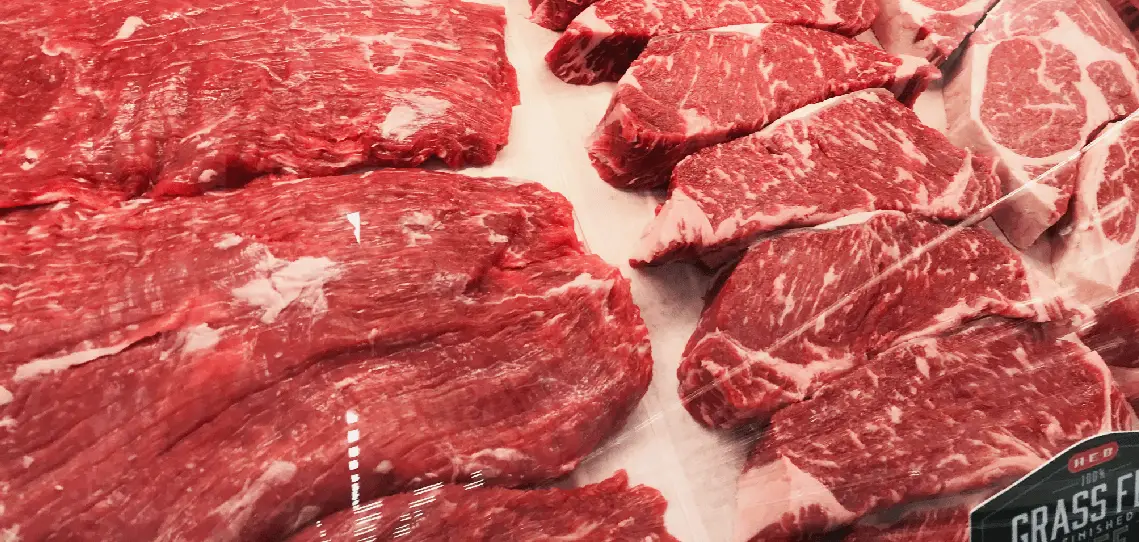When it comes to eating any kind of meat, you want to know that what you are making is cooked well and safely.
With meat, it should be expected to see no parts pink or red (except for beef).
To see any signs of pink is an indication of that meat being undercooked, but is this the case for all? What role does pork play in this theory? Is it okay for pork to be eaten pink?
Can Pork Be Eaten Pink?
The general rule of thumb for pork used to be to cook until it was gray, but is this rule really correct? Well, the answer to that is no, for pork can indeed be eaten pink.
Cooking pork to the USDA recommended temperature of 145ºF can often mean a slight pink center in your pork, depending on which dish you’re cooking.
Generally speaking, if you cook pork until it’s gray throughout you’ll have chewy end results. Having some pink in the meat on the other hand will lead to better overall results.
Even being pink, your pork will still be flavorsome, cooked throughout and, most importantly, safe – provided you cooked to the proper internal temperature.
How Have Opinions Changed?
The debate on pink pork is split between generations. There was a time where pink pork was something to be avoided at all costs and was viewed just the way we see pink in chicken.
It all started because of a fear of a parasite called trichinosis. It was believed that to consume pink pork meant it was undercooked, and undercooked pork carried this parasite.
However, our knowledge today has grown extensively to the point of us recognizing this parasite to be practically non-existent. When learning about trichinosis, it was discovered that it was pigs carrying the parasite because of what they were eating.
Eating pink pork would therefore pass this parasite down and cause flu-like symptoms and even death. With this newfound knowledge, however, pigs are now fed and housed differently, lowering trichinosis to the point of non-existence.
Because of this change, we are able to have some pink in our pork without causing any harm to ourselves. In fact, many find pink pork better in quality.
Does Ground Pork Count?
It is very important to look at ground meat differently to whole meat. Anything ground, whether that be turkey, beef or pork, needs to be cooked thoroughly until brown.
Seeing pink in ground meat is a definite indication of undercooked meat and this is not safe to eat. Make sure to cook your ground pork until it is browned and there are no signs of pink whatsoever.
The temperature rule of thumb for ground pork is 160ºF, per the USDA.
How To Safely Cook Pork
Now that we know that pork can be eaten pink, it is still necessary to know how to cook your meat. It is easy for someone to confuse pink meat with being cooked when at times it may not be cooked enough.
In order to cook it safely, it is important to know of the best ways of cooking.
Pork Temperature
When it comes to cooking any kind of meat, it is essential to know of the correct temperatures. The best way to determine food temperature is through the use of a thermometer.
A wireless thermometer is best for the most accurate results, but you can choose if you wish to use a standard thermometer.
It used to be that the recommended temperature to cook pork was at 160 degrees Fahrenheit, but this was when trichinosis was trying to be prevented. Now, however, that temperature has changed, decreasing to 145 degrees Fahrenheit.
At this temperature, your pork will be flavorsome, full of moisture and will not dry out.
With 165 feet of range and a dual sensor probe, it doesn't get much easier or more accurate than the Meater Plus. Includes 4 Probes, Bamboo Charger, and an OLED display to cook without the app.
Benefits Of Eating Pork
There are of course some people who may still be skeptical of consuming pork that is pink, and this can be for many reasons. This person may be cautious of uncooked meats, or perhaps they are not able to let go of old habits.

Although it is perfectly fine to still cook until gray, it should be acknowledged that pork is 100% safe to eat even when pink.
Vitamins
One of the benefits to eating pork is the richness in vitamins. Aside from the obvious richness in protein, pork also carries plenty of great vitamins such as vitamin B12 and vitamin B6.
These vitamins help with brain activity and with creating red blood cells which is very beneficial to the functioning of the body.
Proteins
Another great benefit to eating pork is how it is very beneficial to a person’s physical health. When exercising, it is not only about how we are working out but what we are consuming too.
It is important to take in healthy meats full of protein and vitamins, and pork is the best match for this.
As well as this, pork is also filled with plenty of nutrients which work to support the muscles. If you are contemplating what to add to your workout diet, pork is the best option for you.
Amino Acids
Pork is also great for a person’s growth. Pork, out of all the meats, is one of the best for it contains plenty of nutrients, vitamins and protein. However, the most important thing within pork is the amino acids.
Amino acids are what the human body needs the most and this can be achieved after protein has been broken down and ingested.
It is important to note, however, that not all protein contains these amino acids. Pork is one meat which is known for supplying amino acids, containing nine essential amino acids altogether. In turn, these acids help with human growth, allowing the body to grow at a healthy capacity.
When it comes to red meat, it is advised that consuming a suitable amount for eating too much can lead to problems such as cancer, heart disease, diabetes and even death.
However, pork is the only red meat out there that has no link between consuming the meat and chronic disease.
This is not to say that to only eat pork means that you will not have any underlying health concerns, but it is safer than many other red meats. Due to the lack of connection, this shows that pork is the safer option.
Final Thoughts
There is no need to have any worries and concerns when it comes to pork, especially when it comes to its color – provided you have cooked it to a safe internal temperature.
Pork used to be problematic due to the disease passed from pigs, however eventually the source of the disease was found and cases are non-existent.
Although it is perfectly acceptable to overcook pork until it is gray and tough, it is just as safe to consume pink pork (you may even find it tastes better!).
When it comes to cooking meat, safety is everyone’s main priority. Depending on the meat, it can be cooked in a variety of ways. Pork alone can be cut into chops and cooked on the grill or smoked low and slow on the BBQ for pulled pork!
Pork is a meat much appreciated by many and is one of the meats with many health benefits. Pork should not be feared anymore! Whether you choose pink or gray pork, know that you are consuming something safe to eat and delicious!
Discover more from Own The Grill
Subscribe to get the latest posts sent to your email.





